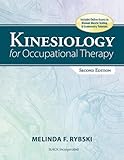Kinesiology for Occupational therapy / Melinda F. Rybski
Material type: TextPublication details: Thorofare, New Jersey : Slack Incorporated, c2012.Edition: 2nd edDescription: xiii, 440 pages : illustrations ; 28 cmISBN:
TextPublication details: Thorofare, New Jersey : Slack Incorporated, c2012.Edition: 2nd edDescription: xiii, 440 pages : illustrations ; 28 cmISBN: - 9781556429163
- RM 735.R93 2012
| Item type | Current library | Collection | Call number | Status | Date due | Barcode | |
|---|---|---|---|---|---|---|---|
 Books
Books
|
KMTC:MACHAKOS CAMPUS General Stacks | RM 735 .R93 2012 (Browse shelf(Opens below)) | Available | MKS/6456 | |||
 Books
Books
|
KMTC:MACHAKOS CAMPUS General Stacks | RM 735 .R93 2012 (Browse shelf(Opens below)) | Available | MKS/6457 | |||
 Books
Books
|
KMTC:MOMBASA CAMPUS General Stacks | Non-fiction | RM 735.R93 2012 (Browse shelf(Opens below)) | Available | MBS/9233 | ||
 Books
Books
|
KMTC:MOMBASA CAMPUS General Stacks | Non-fiction | RM 735.R93 2012 (Browse shelf(Opens below)) | Available | MBS/9234 |
Includes index.
Contents:
Occupational therapy concepts
Kinesiology concepts
Range of motion
Factors influencing strength
The shoulder
The elbow
The wrist
The hand
Posture : functional interaction of the spine and pelvis
The knee, ankle, and foot
Biomechanical intervention approach
Rehabilitation : adaptation and compensation
Summary:"This book is written for occupational therapists and occupational therapy students. The purpose of this book is to explore and explain how movement occurs from a musculoskeletal orientation. This text does not discuss the influence and contribution of the sensory system, nervous systems, volition, or cognition on the production of movement, although these are clearly vital parts of movement. This text includes descriptions of how joints, muscles, and bones all interact to produce movement. General information about muscles and assessment of strength, as well as joints and assessment of joint motion, are contained in two chapters that will elucidate this idea of movement. There are six chapters devoted to how movement is produced at each joint (shoulder, elbow, wrist, hand, lower extremity, and posture). Being able to visualize the internal mechanisms of joint movement and to accurately assess observable joint characteristics is an important part of understanding movement. In order to understand how movement is produced, kinesiology concepts are explained with regard to forces acting on the body and how these forces influence not only movement but ultimately our intervention with clients. Because this book is written for occupational therapists, the first chapter briefly explains concepts particularly related to the profession of occupational therapy. Terminology is defined according to Occupational Therapy Practice Framework: Domain and Process as well as International Classification of Functioning, Disability, and Health (ICF) terminology"--Provided by publisher
There are no comments on this title.

